Biafra News
The Lie About Biafra
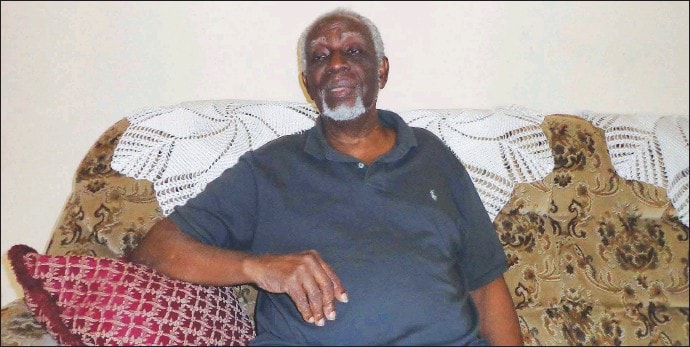
By Frank Aig-Imoukhuede
In an article in the Africa Journal of October 1946 titled Les Portuguaisdans la Baie de Biafra au XViemeSiecle (‘The Portuguese in the Bay of Biafra in the Fifteenth Century’), Monsieur J. Bouchard had stated that the word, Biafra, is not of Portuguese origin as some people think, and does not come from any place or tribe within the region. It is simply a corruption by the cartographers of the sixteenth century of the word Mascha, which was the name of a mountain marked near this region on the map of Africa by Ptolemy.
‘By 1515, Mascha had become Mafra and by some error, Biafra. It is pertinent to note, for example, that Benin’s famous inland port, Gwato (also often written as Gatto), is a corruption of Ughoton, its Edo name. Similarly, although not many people know it, the oldest iron mining centre in Africa, Taruga, lies within the Federal Capital Territory of Abuja and its local name, from which it was corrupted, is Takunshara which Europeans found difficult to pronounce and approximated to ‘Taruga’.
Hearing the news of the success of the Portuguese attracted to the coastline known as the Bight of Biafra by trade, some English and French merchant adventurers came to the Guinea Coast early in the 16th century; but it was not until the later part of that century that the English, French and Dutch came in any number. By that time, following the discovery of the Congo by Diego Cao, the Cape of Good Hope by Bartholomew Dias and India by Vasco da Gama, the West Coast had lost much of its importance to Portugal.
‘The British gradually gained ascendancy in the region and their position became consolidated by their efforts to abolish the slave trade. This position continued after the end of the slave trade, when they became middlemen traders in palm oil and kernels and dominated the markets far inland up the New Calabar, Sombreiro and Orashi rivers.
In the latter river, following a war with the Nembe people, their influence spread as far as to Oguta, north of Owerri Division’. Like the Kalabari who claimed Oba Ama (land of the Oba) as their place of origin, the Oguta people in their oral tradition (see Nzimiro) claim to have also come from Ado n’Oba (their name for Ado or Benin where the Oba lived).
Talbot, in his History of Southern Nigeria, Volume I, in tracing the origin of the name of present-day Calabar-which was also mixed up-states: ‘what in all probability actually happened was that the word was taken from the (New) Calabar river which was so named from the town of the Kalabari who lived on it and seems to have been more important from a trading point of view than the Cross river. Through some error, this name was applied to the Cross-river estuary which was finally called ‘Old’ Calabar to distinguish it from the Kalabari River, which was then named the ‘New Calabar River’.
The map at page 242 of Talbot’s History, described as a ‘New and correct map of Calabar River, shows the New Calabar and Old Calabar rivers as two channels of the same river, again shown West of Bandy (Bonny) and Dony (Andoni), issuing out at the same mouth called the Calabar River or Rio Real’.
After the Benin River and the Sangana outlet and before coming to the Nun, there is a projection of land called Cape Formosa. According to A.R. Mockler – Ferryman in ‘British Nigeria’ published in 1891, ‘The Bight of Biafra extends from this Cape, which is in latitude 40 5’ North longitude 60 East to Cape St. John, in latitude 10 15’ North, longitude 90 3’ East, a distance round the coast line of 400 miles, and in a straight direction, of 280. The Bight of Biafra also includes within it Fernando Po, Principes, Sao Thome and Anno Bon Islands’.
‘Within the Bight are the rivers Nun, Brass (or Bento), St. Nicholas, S. Barbara, St. Bartholomew, Sombrero, New Calabar, Bonny, Andoni, Old Calabar, Rio del Rey, Bimbia, Cameroons, Balimba, Boreah, Campo, Bati, St. Benito and Bassakoo’ some of which feature in both Ptolemy’s map of 1513 and the MERCATOR 1619. In strict sense, these rivers and the land through which they run, mark the boundary of the ‘Bight of Biafra.’
With the rise of British activities and the career of the Royal Niger Company, and British ascendancy in the adjacent coastal regions, which were incorporated in what became the British Protectorate of the Niger between 1884 and 1885, the various rivers of the Bight of Biafra became known as the Oil Rivers.
‘The Oil Rivers-from west to east-were ‘the Benin, Escravos, Warri (Forcados), Brass, St. Nicholas, St. Barbara, St. Bartholomew, Sombrero, New Calabar, Bonny, Andoni (St. Antonio), Opobo, Kwa Ibo, Akpayafe, Kwa, and Cross, the last four of which empty themselves into the Old Calabar before reaching the sea.’
In the neighbourhood of the Benin river, the people who lived in the Bight of Biafra were Bini. To their west were the Ilaje, Ikale, Mahin and the people of Okitipupa; eastward come the Urhobo and between them and the sea, the Jekri or Itsekiri. In the Niger Delta section of the Bight were the Ijo (with several off-shoots), and in their north west the Ibo, who are sub-divided into many minor tribes.
In the eastern division of the Southern Protectorate were a great variety of people mostly allied in language with the Ibo. Among them are the Aro who inhabited fourteen towns which encircled an oracle called the Long Juju, the bam, Edda, Abriba and Ohafia who fought battles for them; and the Ngwa.
In the immediate neighbourhood of Old Calabar, the ‘Biafra’ inhabitants were the Ibibio, Annang and the Efik who are ‘supposed by some to be connected with the Ibo, but by others to be a distinct people;’ while in the country watered by the Upper Cross River and the Cameroon River were the Ekoi and allied semi-Bantus.
Talbot quotes John Barbot as writing in 1699: ‘the territory of Calabar or Calbari, lies on and about the river called by the Portuguese ‘Rio Real,’ by the English ‘Calabar’ and by the Dutch ‘Calbary’ from the town of New Calbari or Calabar situated on that river’.
The Bonny River, which has the same mouth as the New Calabar, was originally called the Rio da Carmo. The Cross River is shown on old Portuguese maps as the Rio da Cruz. (Most of the names given to rivers and islands by the Portuguese were of a religious nature- the Cross river receiving its name not because it was supposed to have ‘crossed over from the Niger’, an erroneous suggestion of the origin of the name which has often been repeated.
The map in Talbot’s History earlier referred to, also states that some leagues north of Calabar Town is Hackbous (Ibo) country. Thus, the boundary of the Bight of Biafra is more clearly defined than it has often been made to look. Issues tagged ‘Biafra’ therefore, are within the competence and jurisdiction of the Bayelsa, Rivers, Cross River, Akwa Ibom and Delta states in which the Bight of Biafra is housed.
‘In the first Portuguese maps after the ‘discovery’ of Nigeria, as well as of their Dutch successors, the whole of the present southern Nigeria, at any rate down to the Bonny River, was shown as the Benin Kingdom.’ (Page 156, Talbot’s Southern Nigeria, Volume 1).
In the MERCATOR 1619 (Redrawn 1925) – (also featured in Talhot’s History) left, next to what was described as Benin Regnum (Kingdom), was Dauma (Dahomey). In the book, the King of Benin is described as ‘the Lord of seven kingdoms’ and ‘Chief King of all that coast.’
According to Dapper (1668), ‘the kingdom of Benin was bordered to the North West by the kingdoms of Ulkami (Olukumi or Oyo), Yaboe (Ijebu), Isago whose army on horseback Benin had fought and defeated, Udobo (Urhobo), and east beyond the Niger, the kingdom of Istamia.
No kingdom or principality by the name of ‘Biafra’ was mentioned in the accounts of visitors to Africa between the 14th and 18th centuries and the 19th century accounts of Baikie, Lander, Crowther, Hutchinson, or other explorers and Claude Macdonald’s assistant, Mockler- Ferryman.
At a time when Europe scrambled for territories and ‘spheres of influence’ in Africa and land was grabbed along the coast to link with land in the hinterland, maps which feature Biafra were not consistent as to the position of ‘Biafra regnum’ or kingdom. A few had it spelt ‘Biafara’ and stretching from Adamawa’s present-day position to the coast next to the kingdom of Benin.
In one of the maps, the Benue River flows from west to east and into Lake Chad! However, one or two maps had on them a ‘River Kebbi’ flowing (correctly) from Yola to a village among the Tuburi swamps in German Cameroon called Bifara. This map had been surveyed by Major Claude Macdonald during his expedition to the Benue River. It was remarked in a footnote of ‘British Nigeria’ by A.F. Mockler-Ferryman where it appeared, that no Frenchman or German had stepped on Bifara soil before 1894.
The foregoing was extracted from the 1935 Intelligence Report on the Kalabari clan by Capt. V.C.M. Kelsey, District Officer and from the publications of Capt. (later Lt. Col. and then Barrister-at-law A.F. Mockler-Ferryman, who was assistant to Major (later Sir) Claude Macdonald, who at one time had served as Commissioner and Consul General of the Bights of Benin and Biafra. Capt. Mockler-Ferryman was the author of the books from which some of these facts were gleaned.
It is clear that the Bight of Biafra refers to the coastal space between the Benin River and the Cameroon River occupied mainly by the Bini, Urhobo, Itsekiri, Kalabari, Okrika, Andoni, Ogoni, Nembe, Brass, Efik, Ibibio and the Ekoi and the inhabitants of the land between Bakassi and the Cameroon mountains. It starts from the Benin River and ends at the Gabon River and is fringed to the northeast by some Ibo groups.
It is clear from the foregoing that matters and issues relating to Biafra are not the exclusive concern or preserve of any single ethnic group but belong to all the entities, territories and peoples within the area tagged the Bight of Biafra – the Bini, Urhobo, Itsekiri, Ijo, Okrika, Ogoni, Efik, Annang, Ibibio, Ododop, Ekoi and some Ibo who at one time were also part of the Oil Rivers; and today are integral parts of Delta, Bayelsa, Rivers, Akwa Ibom and Cross River States.
Unfortunately, as far as the question of self-determination is concerned, secession is being imposed on the indigenous people by elements with fewer claims to indigeneity.
Any matter, especially secession from Nigeria, involving the geographical space known as the ‘Bight of Biafra’, must also include the participation in the ensuing debate, dialogue and negotiation of its constituent elements, entities and all the peoples of the country.
Some people have described Biafra as a metaphor of national growth and development. Our experience of it, however, has proved very costly in the loss of lives; and very costly in its divisiveness and destructiveness what with the energy and resources it requires and has exacted and is required to unravel its conundrums and defuse its time bombs and booby-traps.
In fact, with the origin and antecedence of the word ‘Biafra’ and our bitter experience the last time, the best thing for Nigerians to do – once and for all- is to leave Biafra well alone!

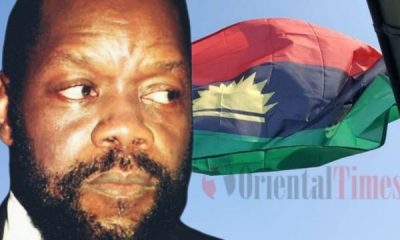

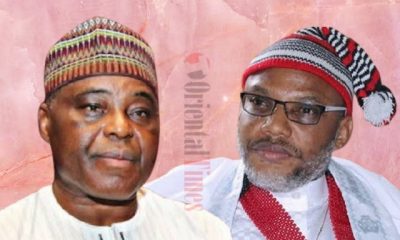

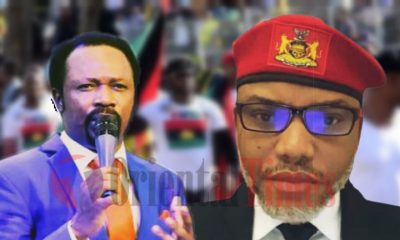



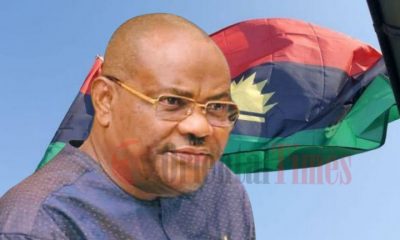



Yacon Root
September 8, 2017 at 10:42 am
Great Site. Really enjoyed reading.
matekpo
September 6, 2017 at 9:06 am
why are they afraid of giving us referendum to justify their clam.
Christopher Ochini
September 5, 2017 at 8:27 pm
What is your business
Emmanuel Daniel
September 5, 2017 at 7:18 pm
ASK HIM HIS AGE BECAUSE BIAFRA ABOVE 200 years
Paul Majah
September 5, 2017 at 5:57 pm
Biafrans are wiser than you. All we want is Biafra
David Ifeanyi
September 5, 2017 at 5:01 pm
Nigeria means what?
Daniel Kelly Kelly
September 5, 2017 at 4:59 pm
Visit and earn money easily(http://dutymoney.com/?ref=346240)
Joshua Sunshine
September 5, 2017 at 4:44 pm
Pls oriental time, step aside l want to knw the particular person that posted this shit.
Evaristus Ibedionu
September 5, 2017 at 4:37 pm
7
Alechenu Owoicho
September 5, 2017 at 4:14 pm
To copy this tune press lie Muhammad
Ntukogu Eloka
September 5, 2017 at 4:12 pm
Well well any objections ,,,, Oily clear ,,,, the last last line said it all ,,,,
Ogbonnaya Emmanuel Chi
September 5, 2017 at 3:32 pm
You better spend the money they gave to you to write rubbish about Biafra with wisdom cos when its finishes is same people you blackmail you will run back and by that time it will be too late for you
Alhaji Eberechi Saint RobertEzuruike
September 5, 2017 at 4:15 pm
Exactly bro,
this thing happened to Ken Saro Wiwa when he betrayed biafrans. The same people that used him against biafrans labelled him a rebel, threw him inside jail and killed him.
It will also happen to those that are been used against biafra and we will greet them good morning in the evening.
That will be when there eyes will open and it will be late by then. .
Ogbonnaya Emmanuel Chi
September 5, 2017 at 3:29 pm
Aguoha Douglas
September 5, 2017 at 3:25 pm
HOW DO U MEAN?
Amb Aliu Olalekan Abayomi
September 5, 2017 at 3:25 pm
Biafra Agitation Is A Fraud. The People Agitating For It Are Fraud.
Ogbonnaya Emmanuel Chi
September 5, 2017 at 3:27 pm
You are a fraud
Valentine Onyeama Ab
September 5, 2017 at 3:34 pm
And u that’s talking ur fraud
Ijeoma Ilo
September 5, 2017 at 3:44 pm
As you are talking you are a fraud mr Abayomi
Ijeoma Ilo
September 5, 2017 at 3:44 pm
As you are talking you are a fraud mr Abayomi
Dan Awgu
September 5, 2017 at 3:49 pm
U er d most idiotic fraudster on earth,silly thing
Emmanuel Nkaa
September 5, 2017 at 3:52 pm
Ugly thing and brainless lunatic idiotic useless animal.
Nkpuma Ifeanyi
September 5, 2017 at 3:54 pm
See ur face,chameleons in human formed.